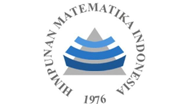Designing an Optimal Route Network for the Synchronized Trans Gadjah Mada Electric Bus (TGMEB) using Max-Plus Algebra
Abstract
Keywords
Full Text:
PDFReferences
I. Sugiarto, F. J. Permana, and A. Yosep, “Bus schedule modelling in Bandung, Indonesia, using max-plus algebra,” IOP Conf Ser Mater Sci Eng, vol. 830, no. 2, pp. 1–6, 2020, doi: 10.1088/1757-899x/830/2/022004.
T. Šfiligoj and A. Peperko, “A max-plus algebraic model of bus bunching and control strategies,” in Transportation Research Procedia, Elsevier B.V., 2025, pp. 88–94. doi: 10.1016/j.trpro.2025.02.013.
F. Baccelli, G. Cohen, G. J. Olsder, and J.-P. Quadrat, Synchronization and linearity : an algebra for discrete event systems. Paris: Wiley, 2001. Accessed: Feb. 02, 2024. [Online]. Available: https://www.rocq.inria.fr/metalau/cohen/documents/BCOQ-book.pdf
B. Heidergott, G. J. Olsder, and J. W. van der Woude, Max Plus at Work : Modeling and Analysis of Synchronized Systems : a Course on Max-Plus Algebra and Its Applications. 2006.
M. A. Rudhito, Aljabar Max-Plus dan Penerapannya. Yogyakarta: Sanata Dharma University Press, 2016.
Z. Liu, “A Novel Model for Train Operation Adjustment in High-Speed Railway based on Max-plus Algebra,” International Journal of Circuits, Systems and Signal Processing, vol. 14, pp. 881–887, 2020, doi: 10.46300/9106.2020.14.114.
R. Farrando, N. Farhi, Z. Christoforou, and A. Urban, “A Max-Plus Model Deriving the Effect of a Skip-Stop Policy on the Train Frequency of a Mass Transit Line,” SSRN Electronic Journal, pp. 2509109_1-2509109_10, 2022, doi: 10.2139/ssrn.4089614.
E. Carnia, R. Wilopo, H. Napitupulu, N. Anggriani, and A. K. Supriatna, “Modified Kleene Star Algorithm Using Max-Plus Algebra and Its Application in the Railroad Scheduling Graphical User Interface,” Computation, vol. 11, no. 1, pp. 1–13, 2023, doi: 10.3390/computation11010011.
J. Uyttendaele, “Timetable compression using max-plus automata applied to large railway networks,” TOP, vol. 31, no. 2, pp. 414–439, 2023, doi: 10.1007/s11750-022-00641-5.
K. Sagawa, “A Railway Timetable Scheduling Model based on a Max-Plus-Linear System,” 2020 59th Annual Conference of the Society of Instrument and Control Engineers of Japan, SICE 2020, pp. 1575–1580, 2020.
M. Hoekstra, “Control of Delay Propagation in Railway Networks Using Max-Plus Algebra,” Delft University of Technology, Delft, 2020. Accessed: Feb. 02, 2024. [Online]. Available: http://resolver.tudelft.nl/uuid:b5816386-0ed9-4760-a6de-f0db0c3a5226
W. Winarni, “Penjadwalan Jalur Bus dalam Kota dengan Model Petrinet dan Aljabar Max-Plus (Studi Kasus Busway TransJakarta),” CAUCHY: Jurnal Matematika Murni dan Aplikasi, vol. 1, no. 4, pp. 192–206, 2011, doi: 10.18860/ca.v1i4.1796.
A. Nait-Sidi-Moh, M. A. Manier, and A. El Moudni, “Spectral analysis for performance evaluation in a bus network,” Eur J Oper Res, vol. 193, no. 1, pp. 289–302, Feb. 2009, doi: 10.1016/j.ejor.2007.08.047.
H. Newcomb, Modeling Bus Bunching with Petri Nets and Max-Plus Algebra. Portland State University Library, 2014. doi: 10.15760/honors.66.
X. Qiu, L. Tao, P. Li, and J. Yang, “Synchronization Optimization Model of BRT System Based on Max-Plus Algebra Petri Net,” ICTE 2013, pp. 911–917, 2013, doi: 10.1061/9780784413159.134.
C. Wang and Y. Tao, “Locally and globally optimal solutions of global optimisation for max‐plus linear systems,” IET Control Theory & Applications, vol. 16, no. 2, pp. 219–228, 2021, doi: 10.1049/cth2.12219.
D. Merdekawati, “Closed Shop Scheduling Optimisation using Max-Plus Automata,” J Phys Conf Ser, vol. 1341, no. 4, 2019, doi: 10.1088/1742-6596/1341/4/042015.
A. Edthofer, “Train schedule analysis and optimization with the max-plus automaton,” 32nd European Modeling and Simulation Symposium, EMSS 2020, pp. 161–164, 2020, doi: 10.46354/i3m.2020.emss.022.
J. Xu, T. van den Boom, and B. De Schutter, “Optimistic optimization for model predictive control of max-plus linear systems,” Automatica, vol. 74, pp. 16–22, 2016, doi: 10.1016/j.automatica.2016.07.002.
J. Xu, B. De Schutter, and T. J. J. van den Boom, “Model predictive control for max-plus-linear systems via optimistic optimization,” IFAC Proceedings Volumes, vol. 47, no. 2, pp. 111–116, 2014, doi: 10.3182/20140514-3-fr-4046.00063.
P. M. Dower, “An Adaptive Max-Plus Eigenvector Method for Continuous Time Optimal Control Problems,” Springer INdAM Series, pp. 211–240, 2018, doi: 10.1007/978-3-030-01959-4_10.
H. Zhang, Y. Tao, and Z. Zhang, “Strong solvability of interval max-plus systems and applications to optimal control,” Systems & Control Letters, vol. 96, pp. 88–94, 2016, doi: 10.1016/j.sysconle.2016.07.005.
M. Akian, “An Adaptive Multi-Level Max-Plus Method for Deterministic Optimal Control Problems,” IFAC-PapersOnLine, vol. 56, no. 2, pp. 7448–7455, 2023, doi: 10.1016/j.ifacol.2023.10.628.
C. Wang, Y. Tao, and H. Yan, “Optimal input design for uncertain max‐plus linear systems,” International Journal of Robust and Nonlinear Control, vol. 28, no. 16, pp. 4816–4830, 2018, doi: 10.1002/rnc.4285.
B. G. Fitzpatrick, K. Holmbeck-Cannell, M. Laffin, and Y. Wang, “Optimal perimeter patrol via max-plus probability,” 2014 American Control Conference, pp. 5248–5253, 2014, doi: 10.1109/acc.2014.6859306.
B. Heidergott, G. J. Olsder, and J. van der Woude, Max Plus at Work. Princeton: Princeton University Press, 2006. [Online]. Available: http://about.jstor.org/terms
Subiono, “Aljabar Min-Max Plus dan Terapannya,” 2015.
D. Systemes, “Scilab,” 2015, Scilab Enterprises, France: 5.5.2. Accessed: Jan. 20, 2025. [Online]. Available: https://www.scilab.org/news/scilab-552-release
S. Subiono, D. Adzkiya, and K. Fahim, “Toolbox Aljabar Max-Plus dan PetriNet,” 2016, Departemen Matematika, Institut Teknologi Sepuluh Nopember, Surabaya: MAXPLUSV04032016. Accessed: Oct. 23, 2024. [Online]. Available: http://koncomatematika.blogspot.com/2016/05/cara-menginstall-toolbox-max-plus-scilab.html
DOI: http://dx.doi.org/10.30829/zero.v9i2.25392
Refbacks
- There are currently no refbacks.

This work is licensed under a Creative Commons Attribution-ShareAlike 4.0 International License.
Publisher : Department of Mathematics Faculty of Science and Technology Universitas Islam Negeri Sumatera Utara Medan | |
✉️ Email: zero_journal@uinsu.ac.id 📱 WhatsApp:085270009767 (Admin Official) | |
 |  |  |  |  |



